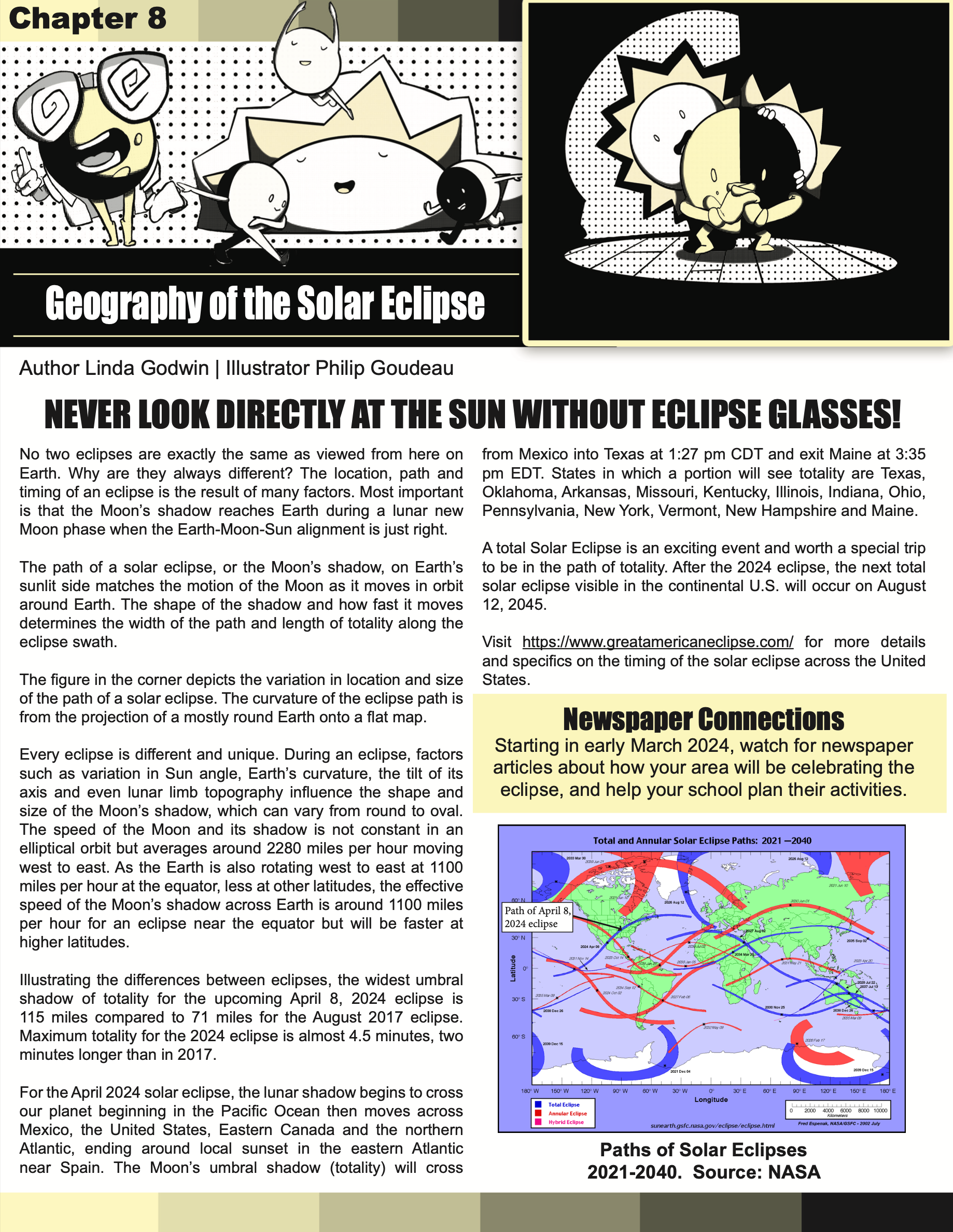
Author Linda Godwin | Illustrator Philip Goudeau
NEVER LOOK DIRECTLY AT THE SUN WITHOUT ECLIPSE GLASSES!
No two eclipses are exactly the same as viewed from here on Earth. Why are they always different? The location, path and timing of an eclipse is the result of many factors. Most important is that the Moon’s shadow reaches Earth during a lunar new Moon phase when the Earth-Moon-Sun alignment is just right.
The path of a solar eclipse, or the Moon’s shadow, on Earth’s sunlit side matches the motion of the Moon as it moves in orbit around Earth. The shape of the shadow and how fast it moves determines the width of the path and length of totality along the eclipse swath.
The figure in the corner depicts the variation in location and size of the path of a solar eclipse. The curvature of the eclipse path is from the projection of a mostly round Earth onto a flat map.
Every eclipse is different and unique. During an eclipse, factors such as variation in Sun angle, Earth’s curvature, the tilt of its axis and even lunar limb topography influence the shape and size of the Moon’s shadow, which can vary from round to oval. The speed of the Moon and its shadow is not constant in an elliptical orbit but averages around 2280 miles per hour moving west to east. As the Earth is also rotating west to east at 1100 miles per hour at the equator, less at other latitudes, the effective speed of the Moon’s shadow across Earth is around 1100 miles per hour for an eclipse near the equator but will be faster at higher latitudes.
Illustrating the differences between eclipses, the widest umbral shadow of totality for the upcoming April 8, 2024 eclipse is 115 miles compared to 71 miles for the August 2017 eclipse. Maximum totality for the 2024 eclipse is almost 4.5 minutes, two minutes longer than in 2017.
For the April 2024 solar eclipse, the lunar shadow begins to cross our planet beginning in the Pacific Ocean then moves across Mexico, the United States, Eastern Canada and the northern Atlantic, ending around local sunset in the eastern Atlantic near Spain. The Moon’s umbral shadow (totality) will cross from Mexico into Texas at 1:27 pm CDT and exit Maine at 3:35 pm EDT. States in which a portion will see totality are Texas, Oklahoma, Arkansas, Missouri, Kentucky, Illinois, Indiana, Ohio, Pennsylvania, New York, Vermont, New Hampshire and Maine.
A total Solar Eclipse is an exciting event and worth a special trip to be in the path of totality. After the 2024 eclipse, the next total solar eclipse visible in the continental U.S. will occur on August 12, 2045.
Visit https://www.greatamericaneclipse.com/ for more details and specifics on the timing of the solar eclipse across the United States.
Newspaper Connections
Starting in early March 2024, watch for newspaper articles about how your area will be celebrating the eclipse, and help your school plan their activities.


















